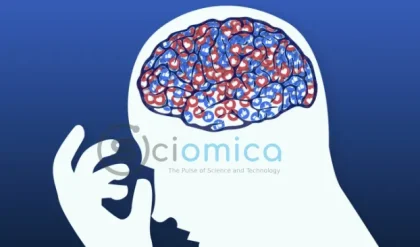
A groundbreaking development in cancer research has emerged from a multinational collaboration led by the Garvan Institute of Medical Research. Researchers have unveiled an innovative artificial intelligence tool, named AAnet, designed to enhance the understanding of cellular diversity within tumors, potentially paving the way for more targeted and effective treatment options for patients.
The findings detailing the development and application of AAnet have been published in Cancer Discovery, the esteemed journal of the American Association for Cancer Research. Traditional cancer treatment approaches have often treated tumors as homogeneous entities composed of identical cells. However, emerging evidence underscores that tumors are, in fact, complex ecosystems populated by diverse cell types that respond variably to therapies. This heterogeneity complicates treatment protocols, contributing to less favorable outcomes for patients, particularly in cases of triple-negative breast cancer.

Associate Professor Christine Chaffer, a co-senior author of the study and Co-Director of the Cancer Plasticity and Dormancy Program at Garvan, emphasized the challenge posed by tumor heterogeneity. “Currently, we approach cancer treatment with the assumption that all tumor cells share the same characteristics, which often isn’t the case. This can lead to a situation where initial treatment seems effective, but resistant cells persist and the cancer may recur,” explained Chaffer.
Despite the acknowledged problem of cell diversity, researchers have struggled to effectively characterize and classify the differences among cells within a tumor. Chaffer noted, “Understanding how adjacent cells in tumors differ is crucial for developing therapies that can target all cancer cells effectively.”
To address this gap, the research team created the AAnet tool, capable of detecting biological patterns among cells within tumors. They utilized this AI technology to analyze gene expression at the individual cell level in preclinical models of triple-negative breast cancer and in samples from various breast cancer subtypes, leading to the identification of five distinct cancer cell groups, each with unique gene expression profiles indicative of different biological behaviors.
“Through our AI tool, we consistently identified five new cell type groups within single tumors, referred to as ‘archetypes.’ Each archetype exhibited unique biological pathways, rates of growth, and markers indicating prognosis,” remarked Chaffer, detailing the importance of these findings. Future research will investigate how these cell groups evolve over time, particularly following chemotherapy.
The implications of AAnet’s findings mark a significant advancement in cancer research. Associate Professor Smita Krishnaswamy from Yale University, who co-led the development of the AI tool, noted, “The past two decades have revealed an explosion of single-cell data, showing that not just each patient’s cancer, but even each individual cancer cell behaves differently. Our study is the first to synthesize these diverse states into effective archetypes that can enhance the understanding of tumor growth and metastasis.”
With AAnet, researchers believe they are on the cusp of a transformative shift in cancer treatment methodologies. Traditionally, treatment strategies have relied heavily on the location of the tumor and any presenting molecular markers. AAnet, on the other hand, facilitates a more nuanced analysis of tumor heterogeneity, granting insights into the biological functions of each cell group. Chaffer commented, “This tool gives us the potential to design rational combination therapies that strategically target each distinct cell group and their associated pathways, significantly improving patient outcomes.”
Professor Sarah Kummerfeld, also a co-senior author and Chief Scientific Officer at Garvan, articulated an ambitious vision for the future of cancer treatment: “We foresee a scenario in which clinicians augment traditional diagnostic processes with AI-driven analyses to create more personalized therapies targeting all cell types within a patient’s tumor. While our study was focused on breast cancer, the potential extend to various forms of cancer and autoimmune diseases, harnessing cutting-edge technology to enhance patient care.”
This research received extensive support from several institutions, signifying a collaborative effort towards advancing cancer treatment and personalizing the therapeutic landscape for patients worldwide.
Reference:
- Aarthi Venkat, Scott E. Youlten, Beatriz P. San Juan, Carley A. Purcell, Shabarni Gupta, Matthew Amodio, Daniel P. Neumann, John G. Lock, Anton E. Westacott, Cerys S. McCool, Daniel B. Burkhardt, Andrew Benz, Annelie Mollbrink, Joakim Lundeberg, David van Dijk, Jeff Holst, Leonard D. Goldstein, Sarah Kummerfeld, Smita Krishnaswamy, Christine L. Chaffer. AAnet resolves a continuum of spatially-localized cell states to unveil intratumoral heterogeneity. Cancer Discovery, 2025; DOI: 10.1158/2159-8290.CD-24-0684






